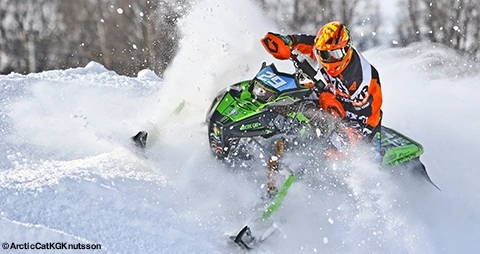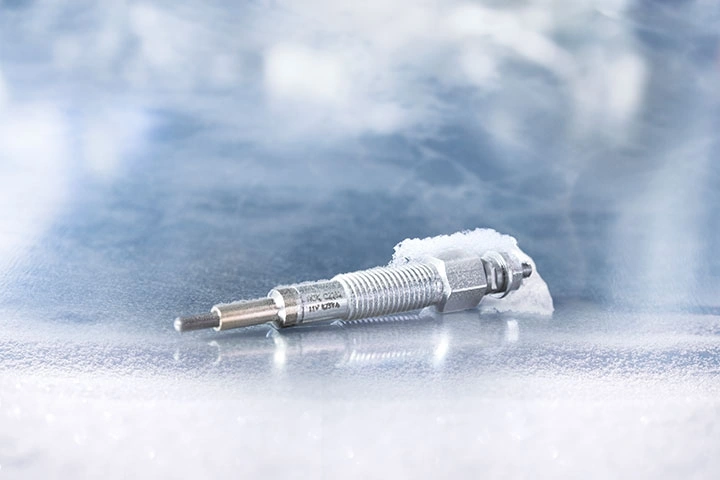Boating know-how: top tips to get you set for summer

“Boat owners are so excited to fling off the covers after winter storage. All they can think about is hitting the waves again!” smiles Mikael Lyckberg, Area Manager Nordic & Baltic States at NGK SPARK PLUG EUROPE. As a marine engine expert and living in Sweden, where some parts of the country are archipelagos that can only be accessed by boat, Mikael understands the lure of the water. With around 6 million recreational boats kept in European waters (of which more than 3 million are in the Nordics alone), plus a staggering 27,000 km of inland waterways and 70,000 km of coastline to enjoy across the region, an estimated 36 million Europeans share the boating passion*.
When a boat has an inboard or outboard motor, he explains, there’s more to look out for than the usual post-winter checks. “The previous summer’s boating demands, frosty storage conditions and motor disuse can all take their toll,” confirms Mikael, who owns a boat himself. “That’s why we at NGK advise not only maintaining the bodywork and equipment each spring, but also doing an engine and ignition check before you set off. By following these tips you’ll have peace of mind that your boat will run as reliably and safely as possible, even if you’re out on the open water, or many hours away from a harbour or home.”
1. Inspect and clean
Firstly, inspect your boat thoroughly, from its hull to the interior furnishings. Are there any obvious surfaces or equipment needing repair or maintenance? Cleaning is also important – and not just for appearances. Washing down the tarpaulin, hull and decks, as well as vacuuming, waxing, polishing or painting other fixtures and fittings will protect every surface and help them last longer. “If the cabin smells or has mildew, ventilate it with an air de-humidifier or electric dryer,” Mikael suggests. “Check the heating too. You should also review the fresh and waste water systems, replacing any pumps, filters or valves necessary.”
2. Test the electrics
Onboard electrics are vital on any engine-powered boat. Check that every electrical outlet is working, applying an anti-corrosive spray to connectors if needed, and replace blown lamps and light bulbs. A fully working battery is equally key to many onboard systems. “Make sure yours is analysed with a battery tester and replaced if any charging problems are diagnosed,” continues Mikael. “Clean any corrosion off the battery terminals and top up with distilled water if needed.”
3. Check the engine and fluids
An all-round motor inspection by a qualified workshop technician is equally essential every spring.
Fluids – namely the oil, coolant and fuel – are a key consideration. The oil should have been drained before the boat was stored so will need replacing, possibly including an oil additive to keep the engine clean and corrosion free. Replace the oil filter too, if not done previously. The boat’s cooling system should also have been emptied before winter to avoid the risk of freezing. Before refilling it, your workshop needs to check the coolant hoses for possible damage and empty the strainer. On outboard engines using an impeller cooling system, the rubber impeller must be examined for cracks. In contrast, says Mikael, the fuel tank should have been filled to the brim before storage, to stop condensation forming that would cause the carburettor to draw water and prevent the engine starting. However, if no additive was put in to prevent fuel separation and water contamination, the fuel might have gone stale – so make sure it’s replaced. Also ask your workshop to inspect the fuel lines for cracks, and preferably fit a new fuel filter.
Another of the most important checks is on the engine’s ignition performance. Before storing your boat for winter, the ignition cable, distributor and distributor cap should have been wiped clean and sprayed thoroughly, using a contact spray with water-displacing properties. Modern, electronically controlled motors should also have had their plugs sprayed. In spring, therefore, your workshop’s focus will be on checking and replacing any worn parts. Mikael advises: “In particular they need to take a good look at the spark plugs, without which the engine cannot start or keep running. If these are showing signs of wear, appear sooty or have gone dead during storage, they will need replacing – but see our POWER FOCUS section for more advice.”
Other tasks for your workshop include re-cleaning the distributor to remove any winter corrosion, checking and replacing floppy or worn belts, and lubricating the engine’s moving parts.
4. Be safe and secure
Once the main technical and physical jobs are done, it’s time to think about safety and security. Double check that your lifejackets, fire extinguisher, flares, railings, radio, navigation tools and first aid kit are all present and in perfect working order. Also inspect the anchor, its chain and harness for corrosion. Finally, review your paperwork. Ownership documents and operating manuals must be onboard, as well as any emergency information. “Check that your insurance for the year ahead is also up to date – and consider covering the trailer too,” recommends Mikael. “It’s amazing how many are damaged during transit or parking.”
POWER FOCUS: Spark plugs are key for post-winter engine performance
1. Check the plugs
If you expect a reliable engine this season, you must have reliable spark plugs. But don’t just look at the obvious problems, advises Mikael. “If the engine is hard to start or if there’s misfiring when the boat speeds up, it’s clearly time to change the plugs. But even if the engine is still performing well, make sure they are examined. Any physical deterioration or sooty deposits are a signal that they could soon become unreliable,” he confirms. Changing the spark plugs may be an awkward job, he says, but don’t be put off. “Regular, timely replacement does reduce the risk of ignition failure in the journeys ahead. This is especially important for smaller outboard engines used mainly at sea, as water vapour sometimes gets in and corrodes the spark plug threads.”
2. Put quality first
Whenever your plugs are replaced, choose wisely. “For total reliability on the water, it’s vital to fit only genuine, high performance spark plugs to avoid the risk of melted electrodes, power loss or even engine failure. For guaranteed peace of mind, ask for specifically designed, original equipment (OE) quality spark plugs from a trusted brand such as NGK SPARK PLUG,” he adds.
3. Consider iridium
There is another, simple way to boost the performance of almost every boat engine: upgrade to a set of high-tech iridium spark plugs such as Iridium IX from NGK SPARK PLUG. Mikael explains how they work. “The difference lies in their laser-welded, precious metal centre electrodes,” he says. “One of the world’s hardest metals, iridium only starts melting at 2,450∘C so is very resistant to spark erosion. Iridium electrodes can also be as thin as 0.6mm in diameter. These plugs therefore need lower voltage to produce a powerful spark, and they typically last twice as long as standard nickel plugs. On the water, you’ll notice that your engine starts more easily, runs better and accelerates more smoothly. The benefits aren’t just for high speed boat trips. Iridium spark plugs also improve engine response at the slower pace of canal narrowboats, on low speed floodplains and moving around harbours or marinas. That’s because, whilst standard nickel plugs tend to soot up at low speeds, iridium types are specially designed to prevent soot deposits.”
4. Stay on top of iridium plug changes
If you do upgrade to iridium spark plugs, how often you need to have them changed depends on your engine type and usage. If you use your boat on fresh water rivers, canals or lakes, or if it has a large inboard engine used on either fresh or sea water, an extra benefit of iridium is the reduced need for annual changes of hard-to-reach plugs. Outboard engines that are exposed to salty water need annual replacements however. “We recommend you still change your iridium plugs at least once a year, due to the extreme running conditions,” concludes the expert.
Find out more
A range of interactive e-learning tools about spark plugs and oxygen sensors are available on NGK SPARK PLUG’s free, online platform www.tekniwiki.com.
*Source: ICOMIA (International Council of Marine Industry Associations) – Recreational Boating Industry Statistics 2017
 Niterra Blogs
Niterra Blogs








